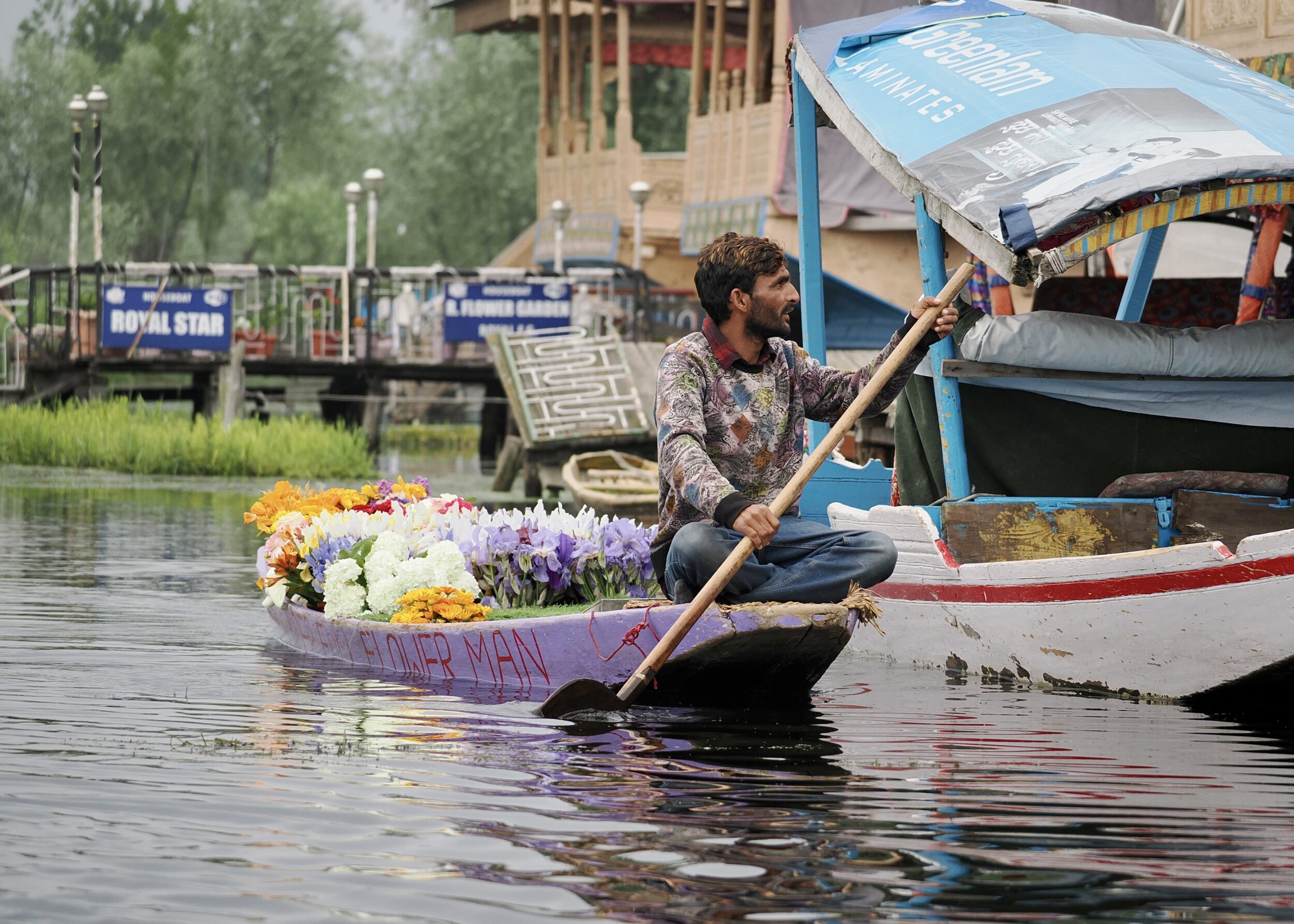From one “tourist” Shikara to another, the “vibe”/“age demographic”/demeanour can be very different.
Comments closedNatural splendour, real musics, wines, wordpower
From one “tourist” Shikara to another, the “vibe”/“age demographic”/demeanour can be very different.
Comments closed
The man in sharp focus is almost certainly a “local”, commuting, at 5.38 pm on 04 May 2024.
His Shikara is modest, undecorated, and he is not trying to sell anything; presumably, therefore, he is not engaged in “the tourist trade”.
Behind, in soft-focus are the category of humans who – “in season”, at least – comprise the majority on Dal Lake.
Even in “soft-focus” the reality of most tourists’ behaviour in 2024 is sadly obvious – their lenses’ focus is not on the various delights of their “holiday destination”.
As you can see, they are taking “selfies”.
That is not the only thing which most Dal Lake tourists currently have in common.
Comments closed
Most of the shopping on Dal Lake involves highly mobile “shops” – Shikaras (local boats) of varying sizes.
Some are elaborately decorated, others are not decorated at all.
However, some goods need more opportunity for both “display” and “shelter” than a Shikara can provide.
Comments closed
As pictured above, at 5.37 am on 06 May 2024 the man we later dubbed “the tea king of Dal Lake” was zeroing in on his next “target”: us.
We and he were at the floating market.
”No thank you” – a phrase we had spoken several times by the time I took the photo – was clearly the “wrong” response, and not worthy of his acceptance.
Our hero insisted that we see and smell how evidently superb was his freshly-brewed Kashmiri tea.
I suspect that Dal Lake has no more forceful “marketer”; even in an inland sea of enthusiastic salesmanship (and, almost invariably, the sellers are males) this bloke stood out!
Comments closed
“The Flower Man” billed himself as such on the side of his painted Shikara.
We encountered him repeatedly.

”The Flower Man” was softly-spoken, never “pushy”.
He well knew that attractive, well-displayed flowers would “sell themselves”.
Comments closed
Over three days, we saw this post’s hero repeatedly, each day.
I am pretty sure that he has been “selling to tourists” for at least several decades.
He was unfailingly courteous, persistent, assiduous.
On any given day, he would call in on a great many of Dal Lake’s “better” houseboats, in addition to often happening along to wherever some of the more “deluxe” tourist-carrying Shikaras happened to be.
Comments closed
Dal Lake is the “Alice’s Restaurant” of lakes.
As some of us are old enough to have heard when the relevant lyric was new, in 1967 a 20 year Arlo Guthrie delivered the following words:
You can get anything you want at Alice’s Restaurant
Excepting Alice
Imagine that you are out on Dal Lake – or relaxing, somewhere along its shoreline – at any daylight hour, on any fine day…
Comments closed
If “your” Dal Lake houseboat is in the quieter part of the lake, you almost certainly will “feel the serenity”…at times.
You will also, there, be able to appreciate what still is an intrinsically very beautiful location.
And, before or after breakfast, without having to move beyond “your” boat’s verandah or landing, you are very likely to enjoy nice encounters with local birdlife.
Comments closed
I took the photo at 6.35 am on 06 May 2024, as we were nearly back at “our” luxurious houseboat, after a very early morning visit to Dal Lake’s (floating) vegetable market.
The pictured houseboat is one of the lake’s biggest; “ours” was pretty substantial, but much smaller…and rather nicer, I suspect.
Atop the big hill – and widely visible from many points in and around Srinagar – is Hari Parbat Fort.
Comments closed
The largest, most luxurious boats on Dal Lake do not traverse its waters.
Its “houseboats” stay put.
In most cases their keels are grounded.
However, in the event of high floodwaters, the houseboats eventually also rise – they float, and thus escape being “flooded”.
The grandest of them – such as the pictured example – are “palatial”.
Elaborately carved woodwork is a signature feature.
Comments closed